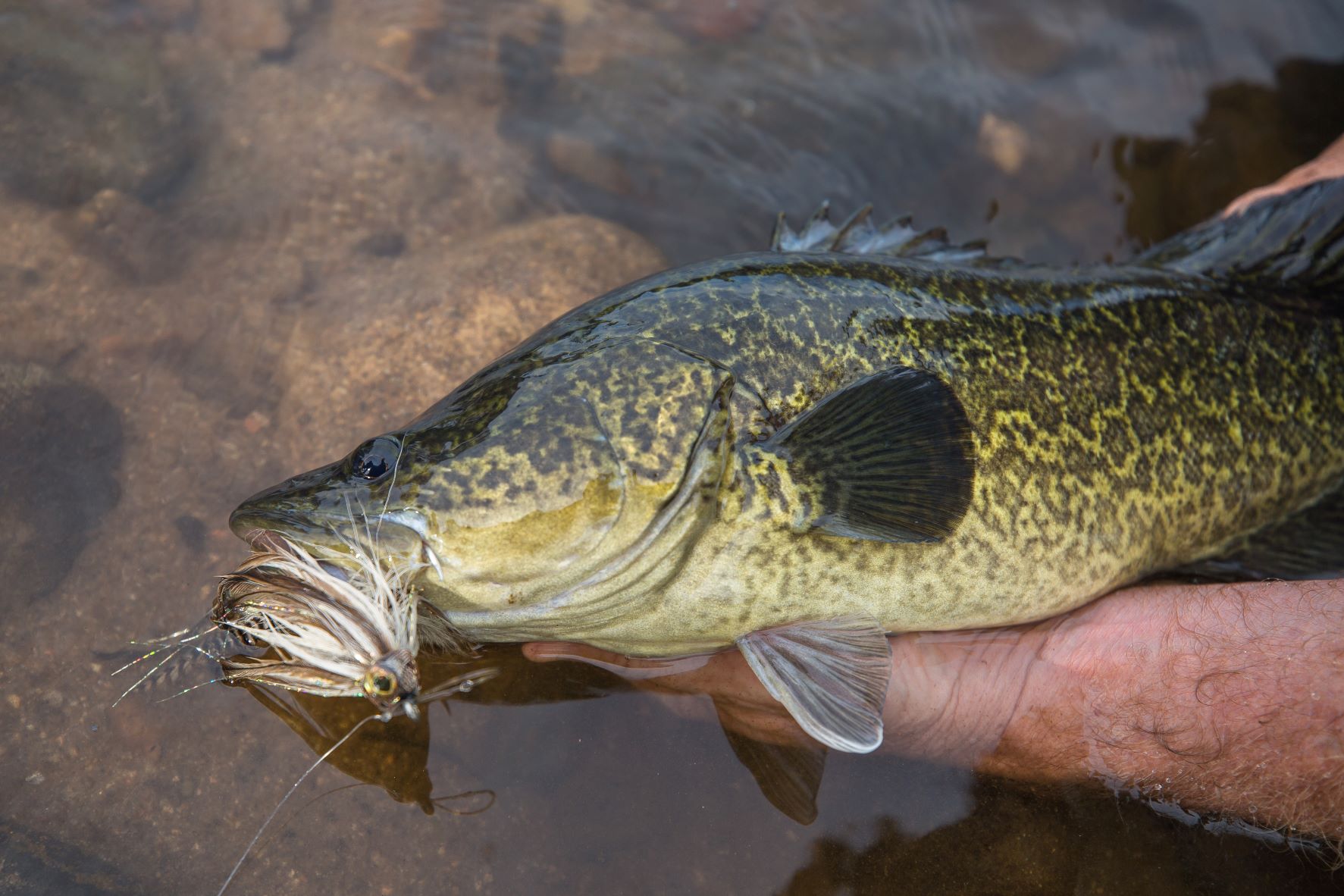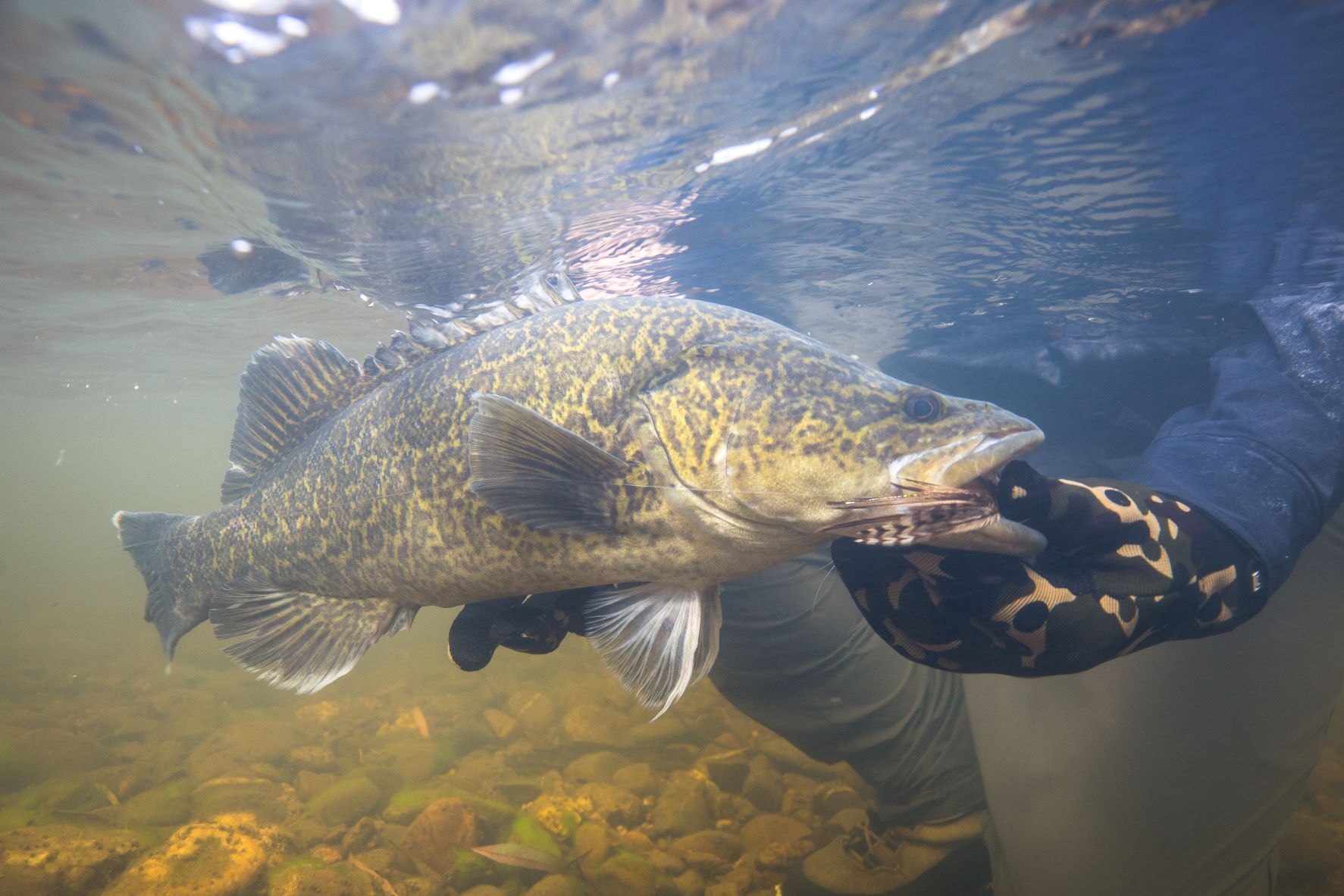How to catch Murray cod
Lake fishing
High country Murray cod are especially beautiful fish because of the clear water in which they live. Intense stocking efforts have seen several upland lakes become hot spots for the species. Boat fishers usually troll or cast lures while boat-based bait fishers will usually try a spot for an hour then move a short distance to another. Shoreline fishing can be deceptively effective as cod will commonly move into the shallows to hunt, particularly in low light periods at dawn and dusk. If you decide to target Murray cod, persistence is the key. They can be moody fish refusing all offerings, then suddenly switch on. So be prepared to put the hours in and have patience. Some lakes in the High Country also contain trout cod so keep an eye out for this special fish.
Trolling
Trolling is probably the most reliable way to encounter a big lake cod! Using large deep diving lures, swimbaits and even surface lures, trollers will often tow (otherwise known as trolling) two lures slowly behind their boat. Deep diving lures will vibrate and clunk into the bottom and submerged timber and have a good chance of swimming past a hungry cod.
Trollers must be willing to cope with their lures becoming snagged and can at times spend a lot of effort getting them back. Navigating the shoreline trolling lures for cod is an artform because it’s important to keep the lures in the strike zone, which is within a metre or two of the bottom most of the time, especially during daylight hours when they’re less likely to be our hunting in the surface waters. Trolling can involve driving your boat tight through bankside trees and is best done with a heavy baitcasting or spin outfit consisting of a rod around 6ft in length with 50lb braided line and a similar strength leader of about 5ft.
Lure casters
Arguably the most serious lake cod fishers are boat-based lure casters. They will put in significant hours and hundreds of casts at likely structure, like standing and fallen timber, weed edges and rocky banks, all hoping to intersect with a Murray cod. Lure casters concentrate in water less than 6m deep and focus between that depth and the bank edge. Larger spinnerbaits, bibbed lures, swimbaits and surface lures are tried depending on the time of day and food sources in the lake. Water clarity can play a big part with clearer water often a good case for more realistic fish like lures. Longer rods are used to aid in bigger casts. A 7-8ft long rod is perfect. Use a baitcaster reel and 50lb braided line tied to 5ft of 40-60lb leader that can be monofilament or fluorocarbon.
Bait
Boat fishers will usually identify a part of the lake adjacent to heavy timber and tie up to a snag or standing timber, lowering baits and playing a sit and wait game. Traditional baits such as bardi grubs, yabbies, shrimp and scrub worm are ideal, and great results can also be achieved with non-natural baits like raw chicken pieces and cheese. As odd as it sounds, it does work! The running sinker rig is popular but make sure you use a circle hook so that your cod doesn’t get gut hooked. That enables the fish to be released in good health if desired. Trolling gear is a great match for bait fishers and moving every hour or so will give the best chance of finding an active fish keen on a meal.
Shore-based fishers
Shore-based lure casters work in reverse from the shoreline, casting out as far as they can through gaps in the trees and working lures back slowly to their feet. Often with lures worked back to the bank, a cod strike can happen in the last metre which is sure to test your heart! All the previous lure types mentioned for the lure casters section are applicable from the shore however the nature of cod fishing around structure will see heavy lure loss. This can be minimised by using smaller spinnerbaits that can be bounced over structure. Alternatively use bibbed diving lures that float when paused on or over snags. Surface lures are another way to go as they will go over the top of anything. A big cod caught from the shore on a lure is a significant trophy!
Bank fishing with bait is a relaxing way to target cod. Using the same baits of bardi grub, yabby, shrimp, chicken or cheese, simply set up adjacent to snags and cast out into a few metres of water. Cod often patrol these edges so make sure to anchor your rod. A 7ft medium heavy spin rod with 50lb braid, 5ft of 60lb monofilament or fluorocarbon leader, and a circle hook to match the size of your bait is ideal.
River fishing
Cod can show up in amazingly small and fast water. If there is any cover or a deeper pool, the chances of cod being present significantly increase. Flowing, clear water also puts you in with a great chance of catching a trout cod, which need to be released in all Victorian rivers. Murray cod in these clear water environments are wary and are thus highly prized captures. Lure casting in High Country rivers for cod is an extra challenge because they will eye off your lure with suspicion before deciding to strike. Bait fishers will likely do better fishing in deep pools, while lure casters can remain active and cover water, hopping from pool to pool. Don’t ignore the runs though because decent Murray cod can take up position in a stream near a boulder just like a trout might!
Casting lures
The size of the stream will dictate how big your lure should be and how deep to run it. Some high-country pools can be quite deep so a diving lure is not out of place. Spinnerbaits can also do well, and a smaller swimbait stands a good chance of passing the inspection test of a wary cod in clear water. You may feel a need to downsize your normal cod lures when fishing smaller waters, but bear in mind that big cod eat other fish so if you are trophy hunting, don’t rule out sticking with big lures. Accurate casts close to cover are required to stay out of trouble. Shorter baitcaster outfits of 6ft and less are ideal to control your casts. Braided line should be 40 or 50lb with a 40lb monofilament or fluorocarbon leader.
Bait fishing
Bait fishers should anchor their baits down and not have them moving too much in flowing water so a heavier sinker is required. Ensure your baits, natural or non-natural, do not spin in the current. A 7ft medium heavy spin rod with 50lb braid, 5ft of 60lb leader and a circle hook to match the size of your baits is all you need.


